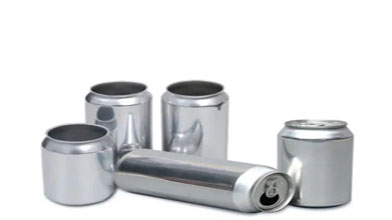
Aluminum cans are one of the most popular types of beverage containers used today, with millions produced each day. But have you ever wondered how they are made? Here is a brief overview of the process:
1. Raw Material Preparation
The primary raw material used in making aluminum cans is aluminum alloys. These alloys are generally made of around 97% aluminum, with small amounts of other metals, such as magnesium and manganese, added to improve strength and durability. The alloy is melted down and then formed into large blocks, referred to as "logs".
2. Extrusion
The logs are then heated and fed into an extrusion press, which applies intense pressure to force the molten aluminum through a specially designed die. This process forms the aluminum into long, thin sheets that are cut to size.
3. Cutting and Bending
The sheets are shaped into cups or cans using a series of cutting and bending machines. The first machines punch out the shapes of the cans from the sheets, while the second ones bend the shapes into their characteristic cylindrical form.
4. Coating
Next, the cans are coated with a thin layer of protective material to prevent the aluminum from coming into contact with the beverage inside. This layer also improves the can's durability and protects it from rusting or corroding.
5. Printing and Labeling
Once the cans are coated, brands can print any design or label information onto them using a combination of digital and traditional printing methods. This is where the cans take on their familiar appearance and where brands can get creative and add personality to their products.
6. Filling and Sealing
Finally, the cans are filled with drinks and sealed to avoid spillage or contamination. Sealing can involve a range of techniques, such as crimping or welding, depending on the design of the can.
As you can see, the process of making aluminum cans is quite intricate, but the end result is a durable, lightweight, and environmentally friendly packaging that is widely used to package beverages around the world.